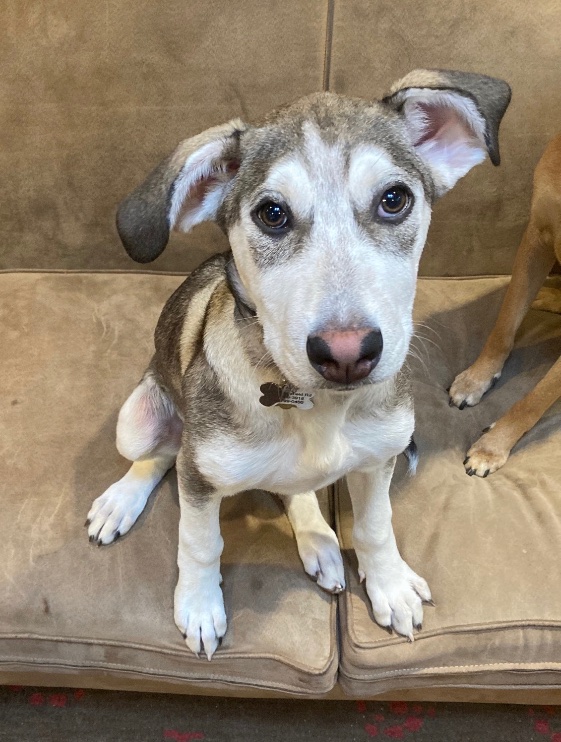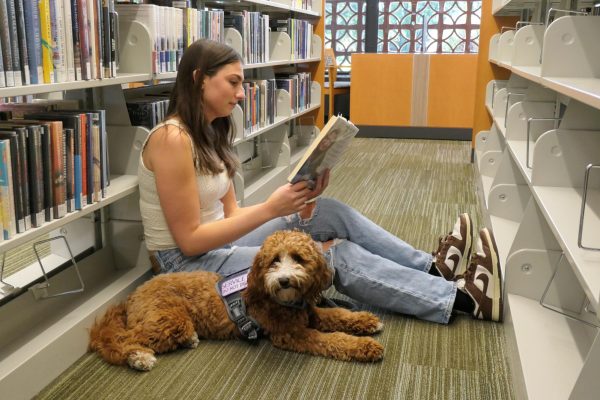Adoption Craze
An insight into the sudden surge of pet adoptions during COVID
Nothing can compare to the feeling of cuddling with an animal companion or spending quality time outdoors together. That connection has brought many people the comfort and companionship during the quarantine period leading to the 55% increase of pet adoptions worldwide.
Leonor Delgado, an education manager at Palo Alto Humane Society, has experienced firsthand the rapid increase in prospective adopters.
“The Palo Alto Humane Society has gotten to the point where people wait weeks to adopt dogs or cats,” Delgado said. “People that used to foster one or two kittens, now adopt three to four.”
The Palo Alto Humane Society has gotten to the point where people wait weeks to adopt dogs or cats.
— Leonor Delgado
The surge has left shelters in Palo Alto with few available animals, while the number of people stuck on the waitlist continues to rise. This change has led to the awareness of a beneficial agreement between shelters worldwide. In places with an excess of animals—who would normally be abandoned or euthanized—are redistributing their animals to combat the shortages.
“I have contact with rescuers all over the country and all over the world, and [other shelters] are sending all the animals who would’ve been doomed to other places,” Delgado said.
The increased interest in dogs have left US shelters empty with animals and many people looking for pets in other countries, and unlike other countries, US families are more open to taking in mutts and other animals that would otherwise be abandoned.

New Paly math teacher, Steve Marsheck, adopted a puppy beagle mutt named Sammy late last year.
“The dog was originally from Mexico, but was taken up to the US by the rescue agency. We adopted it in the US just like any other dog.” Marsheck said.
Not only are animals being brought in from other countries, but surprisingly, people are now being waitlisted due to the low availability of animals.
Michelle Pan, a sophomore, said that she had been waitlisted while trying to get her German Shepherd, Kylo, and could only get him because of a last minute cancellation.
“It was mainly surprising. We weren’t expecting to get our dog so early. My brother and I were very excited to meet [Kylo],” Pan said.
COVID-19 has also changed interactions during the pet adoption process. Shelters are adapting to Covid regulations and enforcing social distancing protocols when meeting a potential owner.

“Before Covid, the shelter was open for visits, and if someone was interested in getting to know a specific animal or animals better, they were allowed supervised visiting time with that animal or animals,” Delgado said.
The monotonous way of life is another reason there has been an increase in pet adoptions. People want the eventfulness of pet ownership, not to mention the mental benefits and the snuggling.
“An animal is a way of support, and in terms of physiology effect, petting and cuddling with animals lowers blood pressure and makes people feel better,” Delgado said.
An animal is a way of support, and in terms of physiology effect, petting and cuddling with animals lowers blood pressure and makes people feel better.
— Leonor Delgado
As we continue through the pandemic, student’s mental health and separation from friends continues to become a major problem in our society. Pets provide us with company and friendship when people desperately crave it.
“There are dogs who get PTSD and anxiety, and to see that in my dog [Winston,] kinda makes it more comforting.” Sophomore Z Malik said. You can see that they’re intricate enough to understand [your] emotions and yet they still love you.”
However, while some animals have been trained to help people, pet owners need to make sure their animals are being well cared for.
There are potential complications of pets adopted during quarantine, such as the development of separation anxiety. Before the pandemic, people would leave their houses to go to work and attend school, forcing animals to learn how to be alone. With the new development of staying home with pets 24/7, experts are concerned that it may adversely affect the pet’s mental health when people return to normal life.
“Some people are suggesting that if you can introduce your pets to other people, maintain social distance and use different people to walk the dog,” Delgado said.
The pandemic has taken its toll on both animals and humans alike, but the relationship between pet and owner continues to strengthen over quarantine with every passing moment
“It’s like having a baby that can move and bite,” Marsheck said. “But it’s also wonderful to snuggle [or take a nap] with [them].”

I joined C Mag newly this year because I thought it would be an interesting opportunity to take advantage of. We’re so lucky to have such a...

2020-2021 - Staff Writer
2021-2022 - Staff Writer
2022-2023 - Managing Editor
I joined C Mag because of the focus on arts and representing our...





